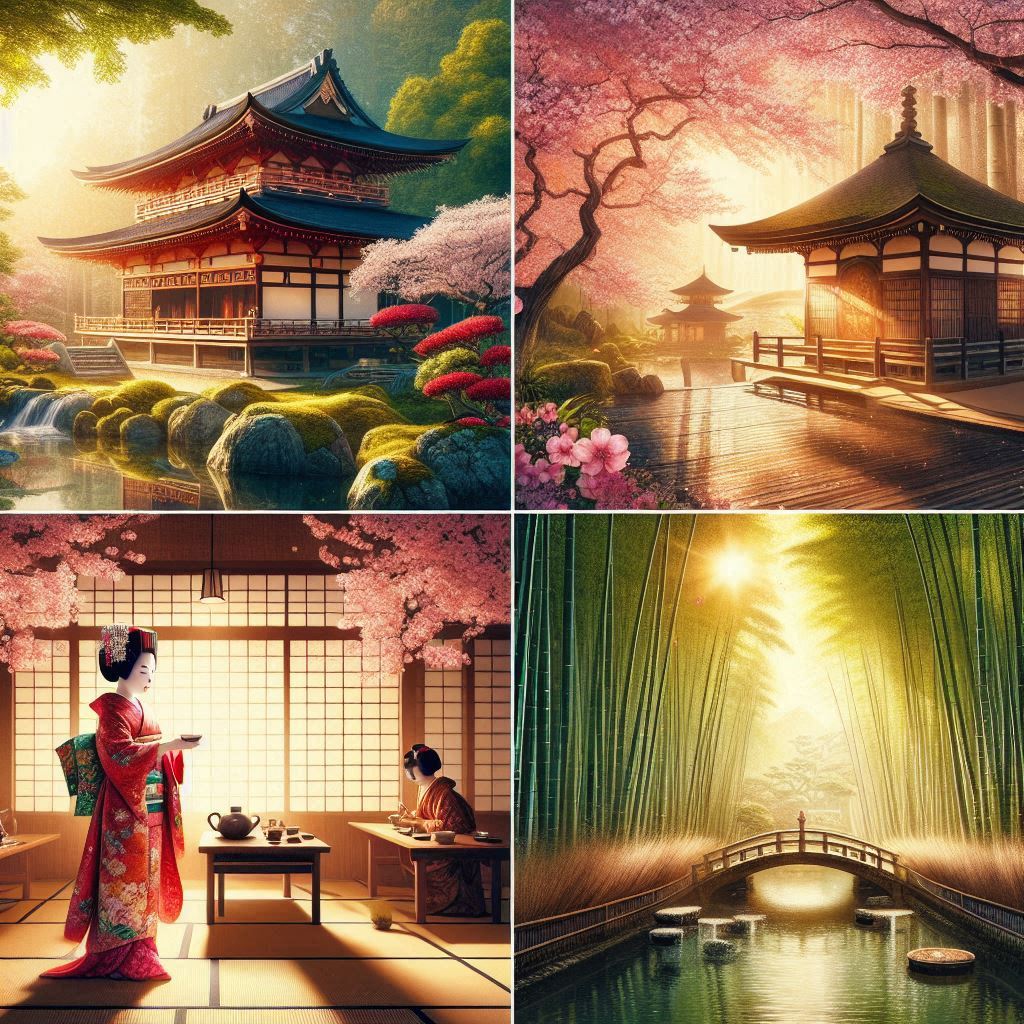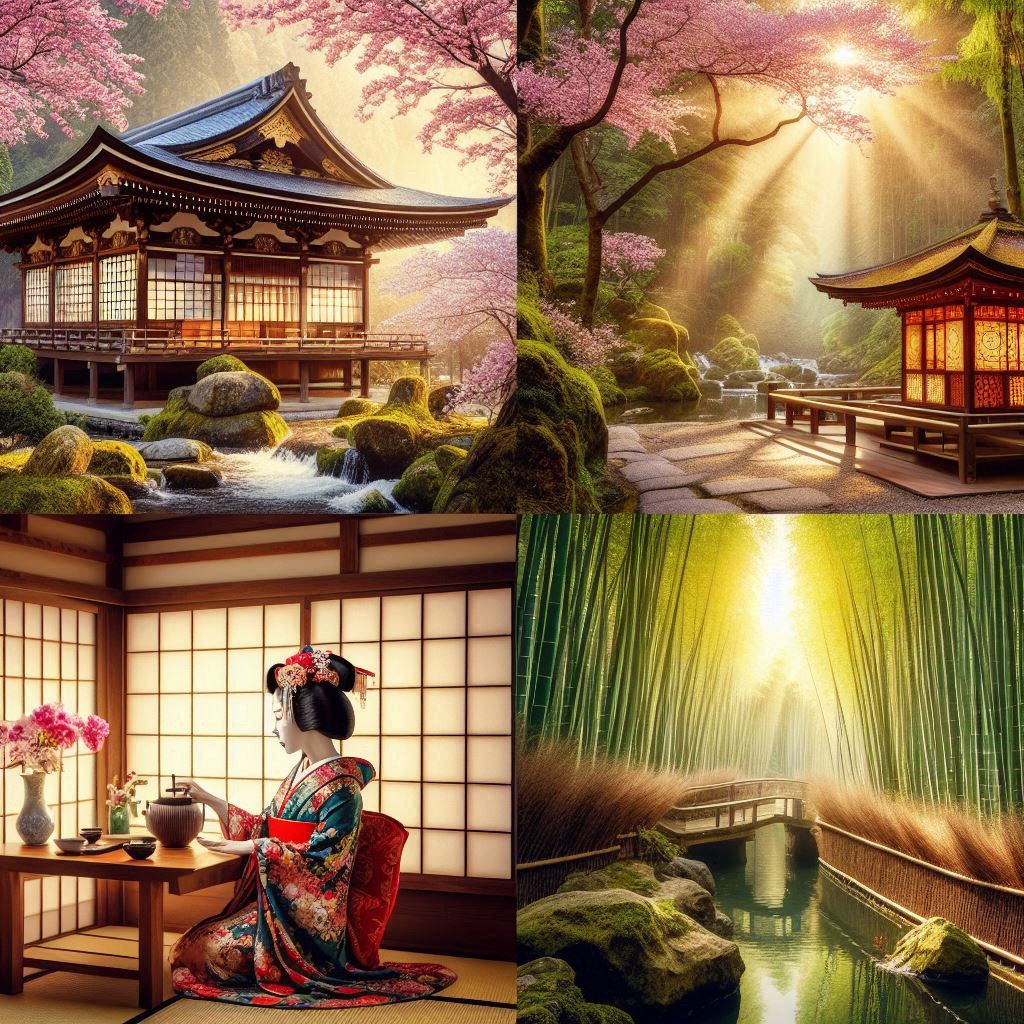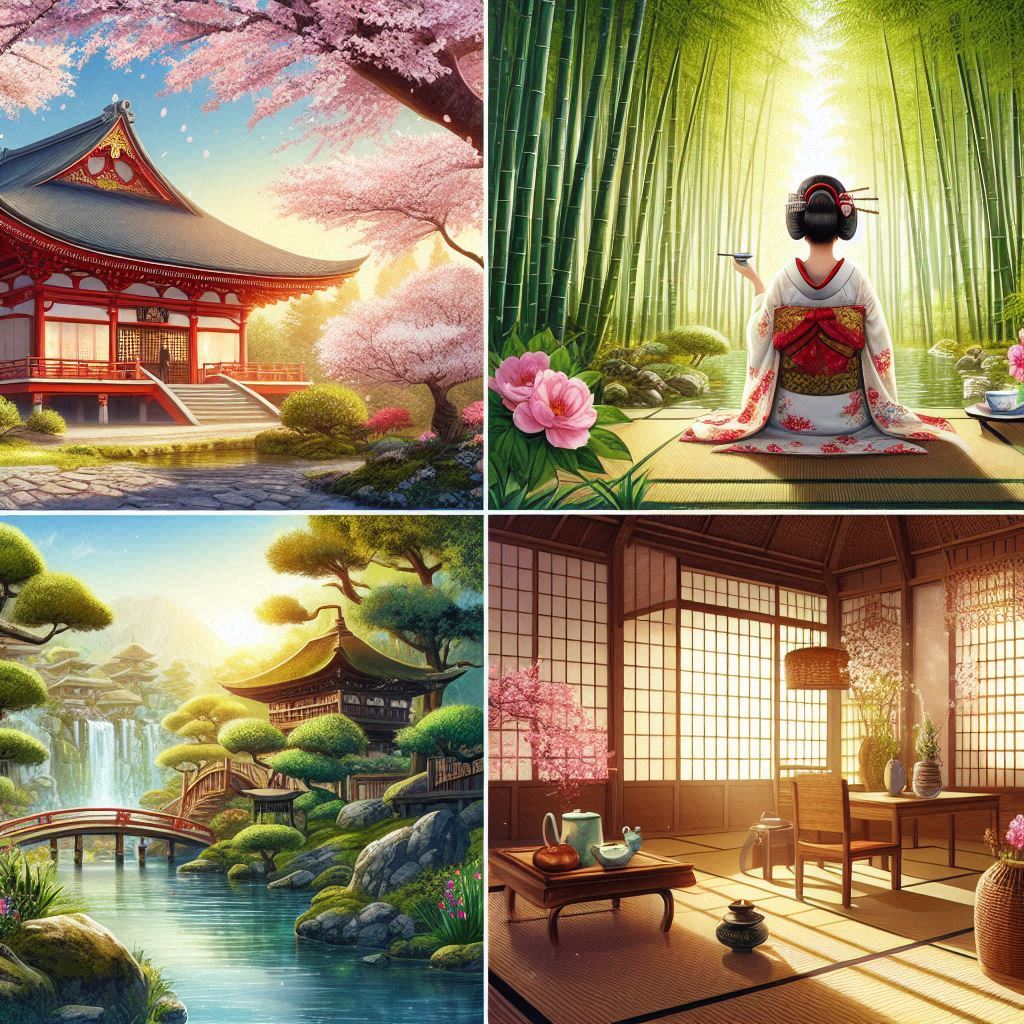盤點日本京都的前十大熱門觀光景點
京都是日本的歷史文化名城,以其豐富的傳統文化、古老的寺廟和美麗的自然景觀而聞名。以下是京都十大旅遊景點的詳細介紹:
1. 金閣寺:正式名稱為鹿苑寺,是京都最著名的地標之一。建於1397年,原為幕府將軍足利義滿的別墅。其建築外牆覆蓋著金箔,在陽光下熠熠生輝。寺廟被一個美麗的池塘環繞,四周的景色四季各異,是遊客必訪之地。
2. 清水寺:建於778年,以其巨大的木制舞臺和清水(純淨水)泉聞名。舞臺從主殿延伸出懸崖,可以俯瞰京都市區和周圍的自然景觀。每年秋季,紅葉點綴的景色尤為壯觀。此外,寺廟周圍有許多傳統商店和茶館,遊客可以在這裡體驗日本傳統文化。
3. 伏見稻荷大社:是京都最重要的神社之一,以其成千上萬的紅色鳥居(牌坊)聞名。鳥居沿著通往稻荷山的路徑排列,形成一條獨特的紅色隧道。該神社供奉稻荷神,是商人和農民祈求豐收和生意興隆的地方。
4. 嵐山:位於京都市區西郊,以其自然美景和文化遺產而著名。嵐山竹林是這裡最具代表性的景點之一,遊客可以漫步在茂密的竹林中,感受寧靜和清新的空氣。每年春季的櫻花和秋季的紅葉也吸引大量遊客前來觀賞。
5. 二條城:建於1603年,是德川家康幕府的京都居所。城內保存完好的二之丸禦殿以其華麗的壁畫和雕刻聞名,是日本古代建築藝術的傑作。城內的庭園設計精美,每年吸引眾多遊客參觀。
6. 銀閣寺:正式名稱為慈照寺,建於1482年,是幕府將軍足利義政的別墅。雖然其外牆並未覆蓋銀箔,但其優雅的建築風格和美麗的庭園仍然讓人印象深刻。寺廟內的苔蘚花園和沙庭尤其著名,展示了日本庭園設計的精髓。
7. 平安神宮:是為紀念平安遷都到京都1100周年而建的,模仿平安時代的宮殿建築風格。神宮內有一座巨大的鳥居,是京都最大的鳥居之一。庭園內的池塘和橋樑構成優美的景觀,是拍照和散步的好地方。
8. 龍安寺:以其石庭聞名,是日本最著名的禪宗庭園之一。石庭由15塊石頭和白砂構成,佈局簡約而富有深意,遊客可以在這裡靜心冥想。庭園周圍的景色四季變化,尤其是秋天的紅葉和春天的櫻花。
9. 祗園:京都的傳統藝妓區,以其保存完好的古老街道和傳統木制建築聞名。這裡有許多高檔餐廳、茶館和藝妓表演場所,遊客可以在這裡體驗日本古老的娛樂文化。夜晚的祗園尤為美麗,燈光點綴下的古老街道充滿魅力。
10. 哲學之道:一條沿著銀閣寺到南禪寺的2公里小徑,以日本著名哲學家~前京都大學教授西田幾多郎命名。小徑沿途種滿櫻花樹,每年春季櫻花盛開時,吸引大量遊客前來散步。這裡是靜心思考和享受自然美景的理想場所。
京都的旅遊景點融合豐富的歷史文化和自然美景,從古老的寺廟、神社到美麗的庭園和街道,每一個景點都展示日本傳統文化的精髓。無論是尋找歷史遺跡、欣賞自然風光,還是體驗當地文化,京都都能為遊客提供獨特而難忘的體驗。
Detailed Introduction to Kyoto's Top Ten Tourist Attractions
Kyoto is a historical and cultural city in Japan, renowned for its rich traditional culture, ancient temples, and beautiful natural landscapes. Here are detailed descriptions of the top ten tourist attractions in Kyoto:
1. Kinkaku-ji (Golden Pavilion): Formally known as Rokuon-ji, Kinkaku-ji is one of Kyoto's most famous landmarks. Built in 1397, it was originally a villa for the shogun Ashikaga Yoshimitsu. The building's exterior is covered in gold leaf, which glistens brilliantly in the sunlight. Surrounded by a beautiful pond, the temple's scenery changes with the seasons, making it a must-visit for tourists.
2. Kiyomizu-dera: Built in 778, Kiyomizu-dera is famous for its massive wooden stage and the Otowa Waterfall, which flows from the temple's main hall. The stage extends out from the main hall, offering a panoramic view of Kyoto and its surrounding natural scenery. The autumn foliage is particularly spectacular. The area around the temple is dotted with traditional shops and teahouses where visitors can experience Japanese culture.
3. Fushimi Inari Taisha: Fushimi Inari Taisha is one of Kyoto's most important Shinto shrines, famous for its thousands of red torii gates. The gates form a tunnel-like path leading to the sacred Mount Inari. The shrine is dedicated to Inari, the god of rice and prosperity, and is a place where merchants and farmers come to pray for good fortune and business success.
4. Arashiyama: Located in the western outskirts of Kyoto, Arashiyama is renowned for its natural beauty and cultural heritage. The bamboo grove in Arashiyama is a signature sight, where visitors can stroll through the dense bamboo forest and enjoy the tranquility and fresh air. The area is also popular for its cherry blossoms in spring and vibrant autumn leaves.
5. Nijo Castle: Built in 1603, Nijo Castle served as the Kyoto residence for Tokugawa Ieyasu, the first shogun of the Edo period. The well-preserved Ninomaru Palace within the castle is famous for its lavish paintings and carvings, showcasing the artistry of ancient Japanese architecture. The beautifully designed gardens attract numerous visitors each year.
6. Ginkaku-ji (Silver Pavilion): Formally known as Jisho-ji, Ginkaku-ji was built in 1482 as a villa for the shogun Ashikaga Yoshimasa. Despite its name, the pavilion's exterior is not covered in silver leaf, but its elegant architectural style and beautiful gardens are impressive. The moss garden and sand garden are particularly famous, exemplifying the essence of Japanese garden design.
7. Heian Shrine: Built in 1895 to commemorate the 1100th anniversary of Kyoto's establishment as the capital, Heian Shrine features architecture that mimics the style of the Heian period palaces. The shrine boasts a massive torii gate, one of the largest in Kyoto. Its gardens, with ponds and bridges, offer picturesque scenery, making it a perfect spot for photography and leisurely walks.
8. Ryoan-ji: Ryoan-ji is renowned for its rock garden, which is one of Japan's most famous Zen gardens. The garden consists of 15 rocks set in white sand, arranged in a way that promotes contemplation and meditation. The surrounding scenery changes with the seasons, with autumn leaves and spring cherry blossoms enhancing its beauty.
9. Gion: Gion is Kyoto's traditional geisha district, known for its well-preserved ancient streets and traditional wooden buildings. The area is home to many high-end restaurants, teahouses, and venues for geisha performances. Visitors can experience the old-world charm and entertainment culture of Japan here. Gion is particularly enchanting at night, with its illuminated streets exuding a captivating charm.
10. Philosopher's Path: The Philosopher's Path is a 2-kilometer-long walkway that runs from Ginkaku-ji to Nanzen-ji, named after the famous philosopher Nishida Kitaro, a former professor at Kyoto University. The path is lined with cherry trees, and during the cherry blossom season, it attracts many visitors for leisurely strolls. It is an ideal place for peaceful reflection and enjoying natural beauty.
Kyoto's tourist attractions combine rich historical culture with natural beauty. From ancient temples and shrines to beautiful gardens and streets, each attraction showcases the essence of traditional Japanese culture. Whether seeking historical sites, admiring natural scenery, or experiencing local culture, Kyoto offers visitors a unique and unforgettable experience.



照片:DALLE3
- 1
- 2
- 3
- 4
